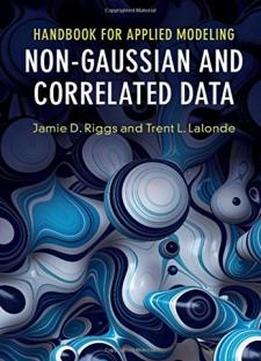
Handbook For Applied Modeling: Non-gaussian And Correlated Data
by Jamie D. Riggs /
2017 / English / PDF
14.5 MB Download
Designed for the applied practitioner, this book is a compact,
entry-level guide to modeling and analyzing non-Gaussian and
correlated data. Many practitioners work with data that fail the
assumptions of the common linear regression models, necessitating
more advanced modeling techniques. This Handbook presents clearly
explained modeling options for such situations, along with
extensive example data analyses. The book explains core models such
as logistic regression, count regression, longitudinal regression,
survival analysis, and structural equation modelling without
relying on mathematical derivations. All data analyses are
performed on real and publicly available data sets, which are
revisited multiple times to show differing results using various
modeling options. Common pitfalls, data issues, and interpretation
of model results are also addressed. Programs in both R and SAS are
made available for all results presented in the text so that
readers can emulate and adapt analyses for their own data analysis
needs.
Designed for the applied practitioner, this book is a compact,
entry-level guide to modeling and analyzing non-Gaussian and
correlated data. Many practitioners work with data that fail the
assumptions of the common linear regression models, necessitating
more advanced modeling techniques. This Handbook presents clearly
explained modeling options for such situations, along with
extensive example data analyses. The book explains core models such
as logistic regression, count regression, longitudinal regression,
survival analysis, and structural equation modelling without
relying on mathematical derivations. All data analyses are
performed on real and publicly available data sets, which are
revisited multiple times to show differing results using various
modeling options. Common pitfalls, data issues, and interpretation
of model results are also addressed. Programs in both R and SAS are
made available for all results presented in the text so that
readers can emulate and adapt analyses for their own data analysis
needs.











